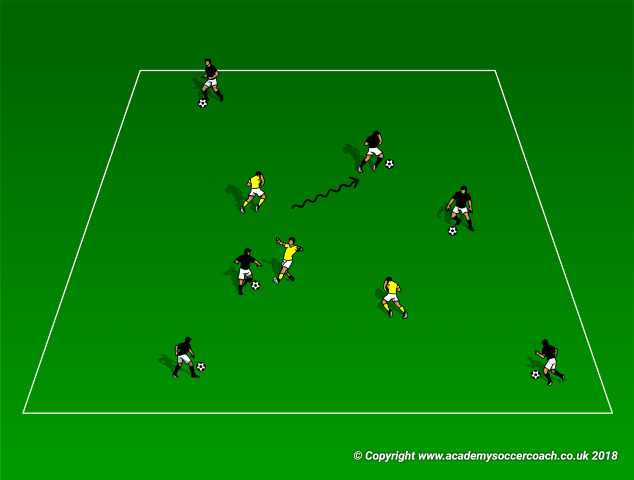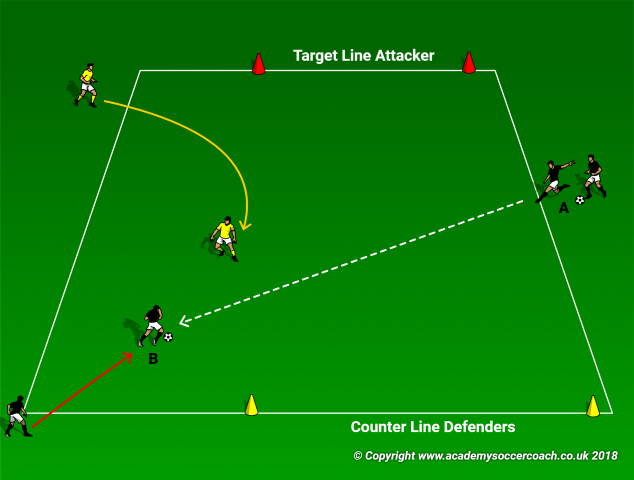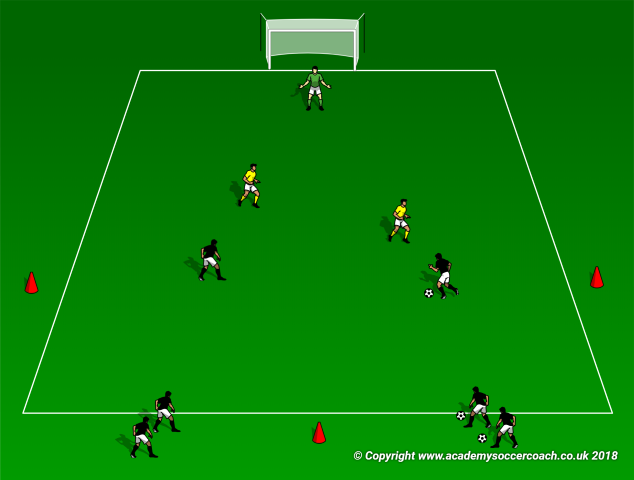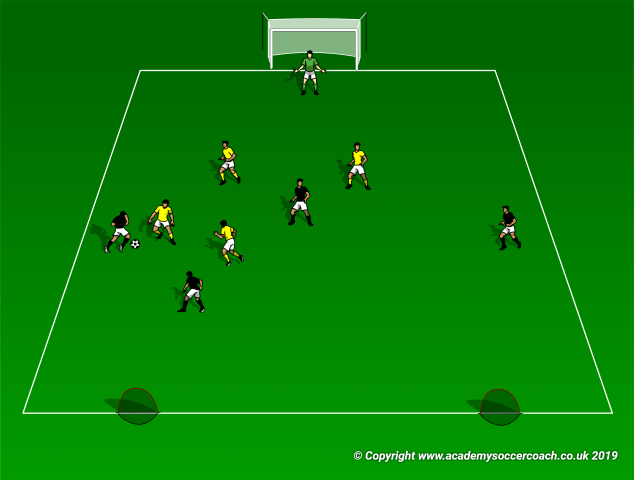By Philip Cauchi
Introduction: Planning a training session on its own has little if any significance on the development of the players. For a maximum effect on the players’ development we should plan both in long, medium and short terms. We are hereby presenting a series of progressive sessions that develop the young players’ ability to defend both individually and in small groups. The age bracket we are targeting is from nine years till twelve. This is known as the golden age of learning, where these young aspiring soccer players are ready to absorb and learn faster both the fundamentals and principles of individual technical-tactical play and also motor coordination. As such, in every session we will have a warm-up that consists of technical-coordinative exercises followed by an exercise targeting the 1v1. This is further followed by a small group game situation or a modified small sided game prior to ending the session with a global game from 4v4 up to 8v8. Instead of telling the players what is required of them to achieve a particular outcome, we let them discover and guide them with the use of properly planned questions. This way the players are engaged throughout the whole session and as they are directly involved in their learning process they can reason things out and apply what they learn into practice.
Session number: 1 of 8.
Total duration: 75 minutes.
Moment of play: Opponents in possession.
Team task: Prevent scoring.
Theme: Defending to win the ball.
Main aim: Prevent the opponents from scoring.
Outcomes:
1. The defender closest to the attacker with the ball is the first attacker and she should be the one to start applying pressure.
2. Apply pressure as the ball is passed from one attacker to another.
3. Apply a low stance on the balls of the feet while directing play away from goal.
4. Cut off shooting angles.
5. Time to tackle to win the ball or block the shot – poor first touch, high ball, short pass, etc.
6. Initiate the counter attack upon winning the ball.
Activation: Protect your ball!
Duration: 10 minutes.
Players: Two groups of eight players each.
Area: 20 yards by 15 yards.
Description: Let the players experiment with dribbling and guiding the ball using both the left and right feet. As the session kicks-off, start by having all players dribbling the ball using either the left or right foot. Progress to having the players search for space to perform a 180 degree turn with the ball prior to moving to a new space and repeating the technique with the other foot. Let the players experiment turning using the inside and outside of the foot and also the half, full scissors and the Cruyff turn. Repeat using both feet. The final progression for this part of the session should be to have the defenders trying to win the ball from the attackers and retain it (shown in the diagram below).

Ask the players questions such:
Why is it important to be able to dribble with both feet? When should we use the inside or outside of the foot to dribble? How should we protect the ball from an opponent? How can we disguise our opponent and create space to dribble?
Game situation 1v1: Defend your line and counter.
Targeted outcomes: 2, 3, 5 and 6.
Duration: 15 minutes – 2 x 4 minutes interspersed with two minutes of rest.
Players: Two groups of attackers and a group of defenders. Have two setups playing at the same time so to enable players to have lots of repetitions.
Area: 15 yards in length by 10 yards in width.
Description: Attacker A passes the ball to attacker B. As the ball is passed from attacker A, the defender should move to apply pressure on the receiver (Attacker B). Attacker B plays 1v1 against the defender and aims to score by dribbling the ball between the red cones. If the defender wins the ball, she counters to score by dribbling the ball between the yellow cones. After each repetition players move one position clockwise.

Ask the players questions such as:
When should the defender apply pressure? Why? At what speed should the defender approach that attacker? (Fast as the ball is travelling and then slow down upon the attacker controls the ball). What angle should the defender approach the attacker? Where should the defender force the attacker? Why? When should the defender tackle to win the ball?
Small group game situation: 2v2 Continuous defending.
Targeted outcomes: All.
Duration: 20 minutes – 4 x 3 minutes interspersed with two minutes of rest.
Players: In pairs plus a goalkeeper in goal.
Area: 20 yards in length by 15 yards in width.
Description: The attackers aim to score as normal in the regular goal defended by the goalkeeper. Should the defenders win the ball they counter and try to score by knocking any of the three red cones over. After an attack is over, whatever the outcome, the previous attacking pair defend against the two new attacking duo. To make it more challenging have all players playing without a bib. This will develop their central and peripheral vision to track players and identify cues while ignoring any irrelevant stimuli.

Ask the players questions such as:
How should the distance between the defenders be when the attacker has time and space on the ball? If the attacker is pressured, how should the covering (second) defender’s position be? Why? What happens if the first defender gets beaten? Is there any cover to prevent the attacker on the ball from shooting at goal or playing a pass which gets the second attacker into an ideal position to shoot at goal?
Small sided game: 4v4+GK.
Targeted outcomes: All.
Duration: 20 minutes – 4 x 3 minutes interspersed with two minutes of rest.
Players: One team consists of a goalkeeper and four outfield players (yellows) and the other team of four outfield players (blacks).
Area: 40 yards by 30 yards.
Description: The attacking team (blacks) aim to score in the regular goal defended by the yellow team and defend their two mini goals positioned on the opposite end. There are no corner kicks or throw-ins. The team in possession restarts play from their own goal line. Teams change roles after three minutes of continuous uninterrupted play.

Ask the players of the defending team questions such as:
How should the team shape be when the opponents have the ball? Are we compact? Are we closing down forward passing lanes? Are we properly positioned to cut off shooting opportunities? How can we win the ball? When should we try to win the ball? Who should put pressure on the ball? Can you name the cues that tells us that we are in a position to apply pressure on the ball? If the first defender manages to apply pressure on the ball, what should the rest of the team do?
Spend five minutes from the conclusive part by having players dribble or juggle a ball. End the session with a brief Q and A with the players. Ask them questions that will elicit their imagination to think of specific situations in which the key outcomes of the session could be applied.
By Philip Cauchi


